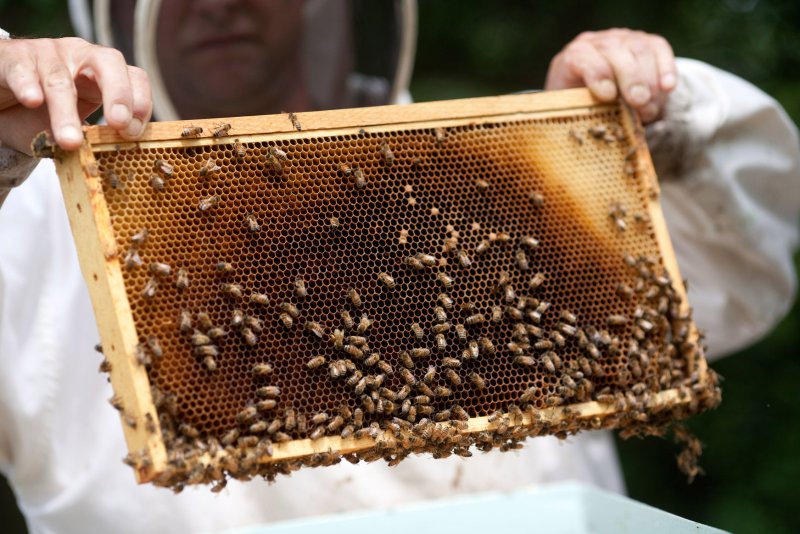Charlie Brandts, a White House carpenter as well as beekeeper, collects the first batch of honey from the beehives on the South Lawn of the White House, June 10, 2009. (UPI Photo/Lawrence Jackson/White House) |
License Photo
LONDON, Feb. 19 (UPI) -- The same viruses that scientists say are responsible for colony collapse disorder in honeybees are being found in wild bumblebee specimens.
In a study, recently published in Nature, researchers found that roughly 20 percent of bumblebees collected at 26 sites in England were found to be suffering from deformed wing virus. More than a third of honeybees were infected. Another deadly parasite, the Nocema ceranae microspore, was found in a very small percentage of collected bees.
Commercially cultivated honeybees are tasked with pollinating the vast majority of industrial agriculture's cash crops. Raising honeybees and renting them out to farmers is a multibillion-dollar business. But even though commercial bees do most of the work, wild bees fill in the gaps, as well as keep most home gardens well-pollinated.
Worries about colony collapse have mostly centered on the disorder's effect on commercial bee operations, but researchers say this latest evidence shows concerns should be extended to wild populations too.
"I think the important take-home message is that we need to be concerned not just about our managed pollinators, but our wild pollinators as well," principle author Mark J.F. Brown told the Los Angeles Times. "Honeybees are absolutely important, but so are wild bees."
The Varroa destructor mite, which infests honeybees and their nests, has been blamed by researchers as the primary transporter of the disorder-related viruses.
"We need as clean honeybee hives as possible, so the spread into the environment is mitigated," said Matthias A. Furst, an evolutionary ecologist at Holloway University and coauthor of the new study.
Previous studies have shown a number of common pesticides make bees particularly susceptible to fatal parasites.
[Nature]
[Los Angeles Times]















